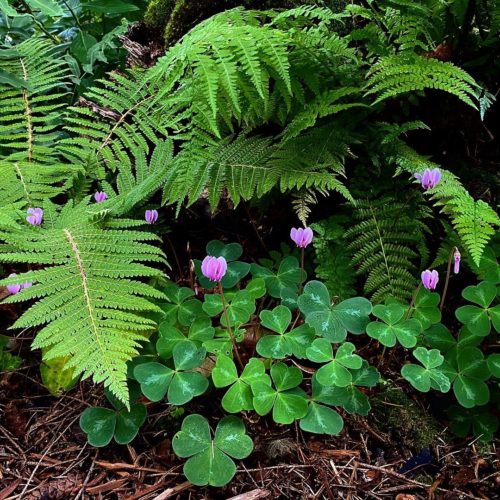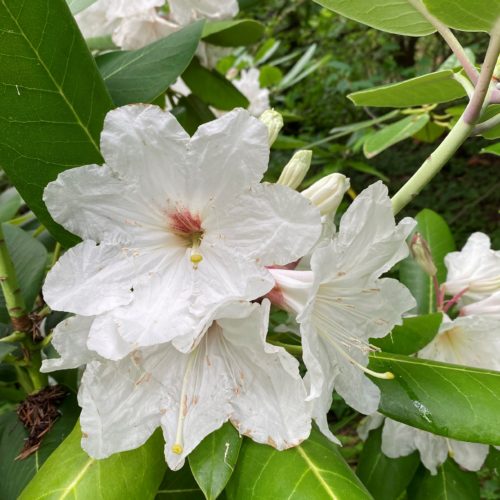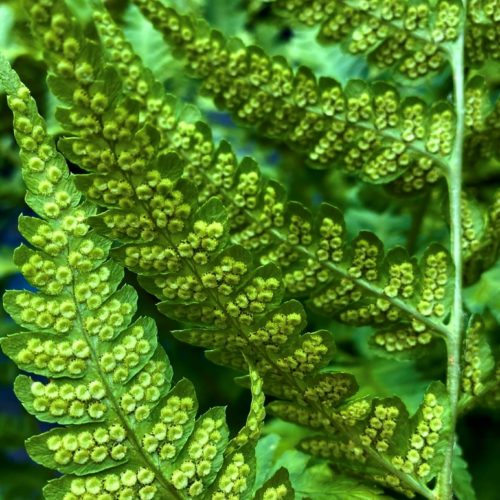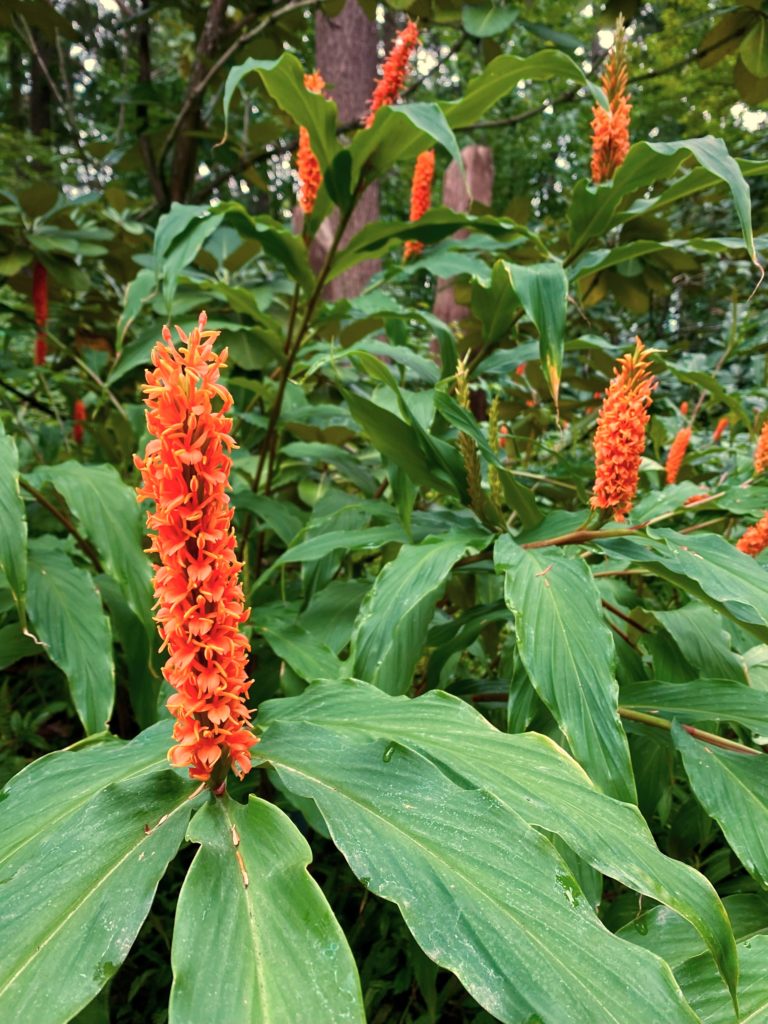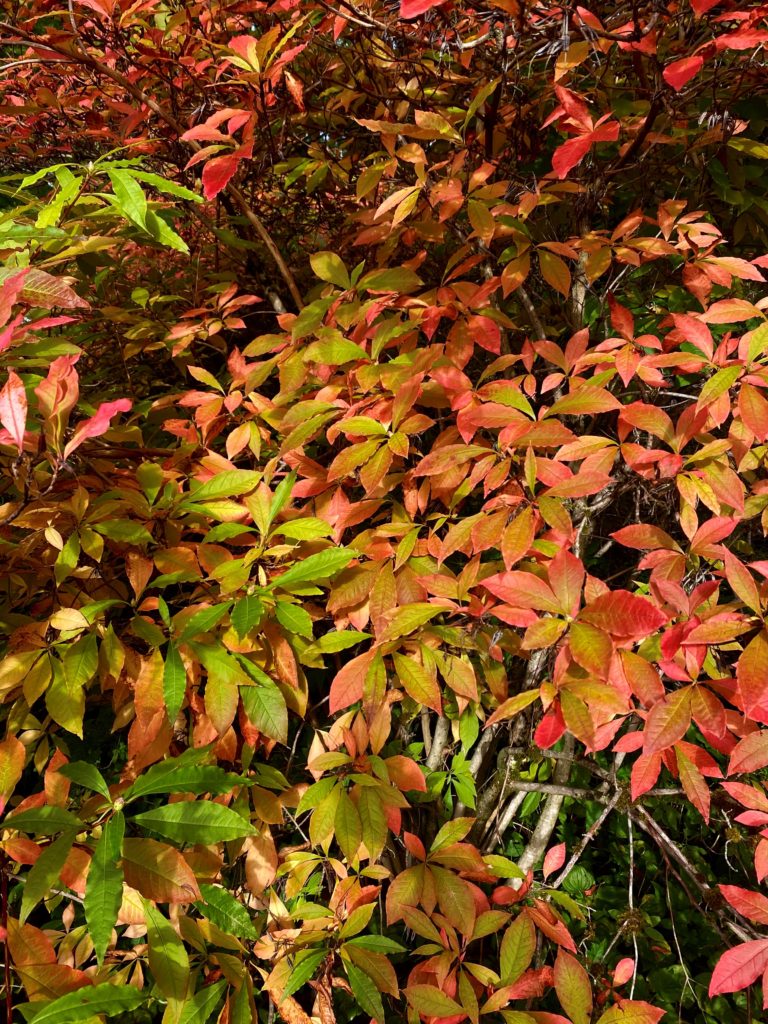By RSBG Assistant Nursery Manager Emily Joseph
The sun-drenched days of summer have passed, ushering in cooler temperatures and welcome rain showers as the seasonal shift from summer to fall sneakily slides into view. Early signs of deciduous foliage gathering sugars and producing anthocyanins and carotenoids have begun (those red, orange, and yellow pigments that produce fall color). Many trees, shrubs, and perennials have already set seed or fruit, signaling the annual surrender to their timely senescence. In many ways this time of year signals a slowing down and quieting around the garden, but not before the final frenetic preparations of bees, birds, and woodland creatures gathering food and nesting material bountifully found throughout autumn.
First Fall Color – In the deciduous azalea collection, the eastern North American native, Rhododendron vaseyi is an all-time early fall favorite species to “leaf-peep.” Planted in a location with good sun exposure and consistent moisture, this species can put on a spectacular show of color that extends well into autumn. Often the leaves begin a soft yellow to apricot before deepening into rich oranges, pinks, and in the sunniest locales, a deep brick red. I will never forget seeing this plant in its native habitat along the Blue Ridge in the Southern Appalachians in October and can truthfully say that it is one of the best species for fall color.
Late Bloomers – Though few evergreen rhododendrons bloom this late in the year, one species faithfully opens large creamy white trumpet-shaped fragrant flowers with a strong but subtle perfume. Rhododendron faithiae, a rare member of subsection Fortunea, is relatively new to the collection. Yet, you will find a group planted just below the lawn on the main path, between the wall of R. calophytum and the large R. auriculatum grove slightly uphill. The plants are sited in the center of the bed, but don’t worry, the intoxicating scent fills the surrounding area for those passing by to enjoy. For perennial pops of color, Hedychium densiflorum blooms with flowers reminiscent of the orange sherbet push-popsicles of childhood, floating atop tropical foliage stalks. This Zingiber (ginger) relative commonly called hardy ginger lily has distinctively columnar terminal racemes packed with tiny orchid-like flowers clustered together around a central stem. The effect is quite eye-catching compared to some of the other more airy or open Hedychium blooms. Another seasonal surprise much smaller in stature, though certainly not in effect, can be found throughout the garden as the corms of Cyclamen hederifolium push up a fall floral display. The delicate pink and white reflexed petals seem to glow just above ground in the darkest of spaces. Soon the flowers will be followed by deep green arrow-shaped foliage with silvery patterning that remains evergreen all winter before going dormant back to the disk-like corm in early spring.
Ferns Getting Frisky – The woodland setting provides the perfect growing conditions and the opportunity for visitors to appreciate an often overlooked, but abundant supporting collection of the garden. Ferns of all shapes and sizes with rounded crowns and running rhizomes release croziers that appear animal-like, if not otherworldly in their growth. Throughout the garden, ferns from the Hardy Fern Foundation collection and numerous plant collectors have been amassed to display the vast variability and beauty of the Pteridophyta, a classification of spore (non-seed) producing plants known as ferns and fern allies. Genera here include Adiantum, Asplenium, Athyrium, Blechnum, Cyrtomium, Dicksonia, Dryopteris, Onoclea, Polystichum, Pyrrosia, Woodwardia and more with countless species from each genus. With warmth and consistent watering, plants have been growing lush and producing sori, the reproductive structure containing the spore from which new ferns are grown. While most sori can be viewed by simply flipping over the nearest frond, some genera like our native deer fern, Blechnum spicant, send up an entirely different looking fertile frond with the sole responsibility of producing spores. These tiny capsules of fertility come in all shapes and sizes, from round/oval to long thin lines, small to large, and run the gamut of colors from green to gold, black, brown, and even bright red. Brushing past ferns in the height of spore production can produce a cloud of the finest dust, sending this precious genetic material on its way to new destinations.
- Cyclamen hederifolium
- Rhododendron Faithiae
- Dryopteris Frond with Sori
- Hedychium densiflorum
- Rhododendron vaseyi

